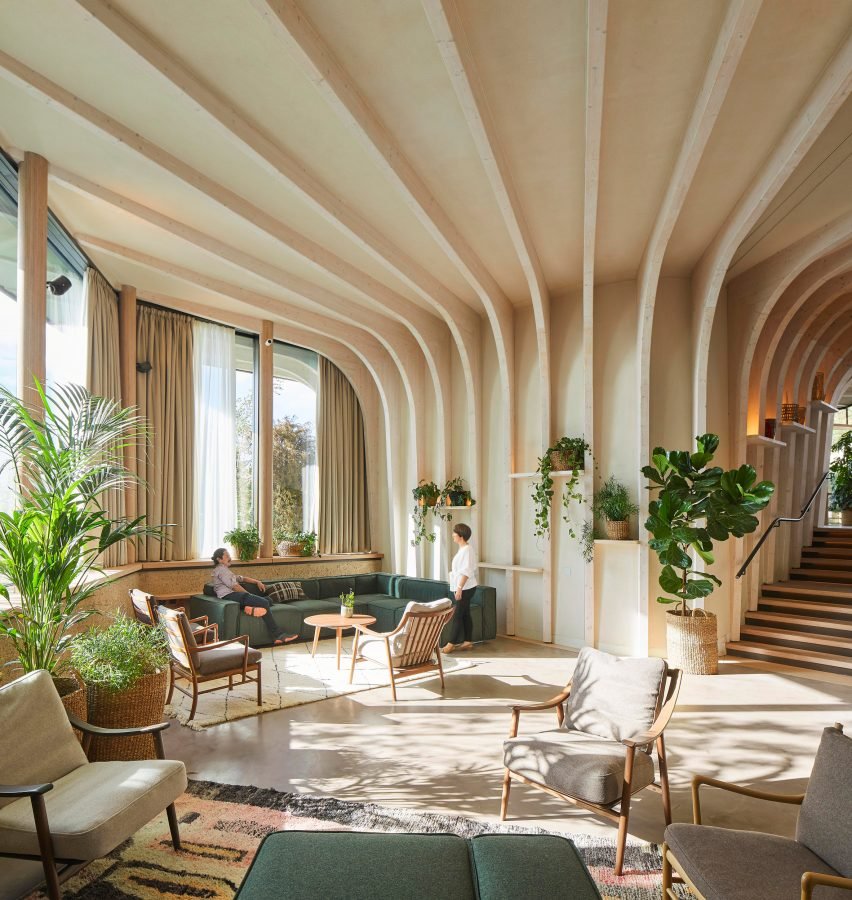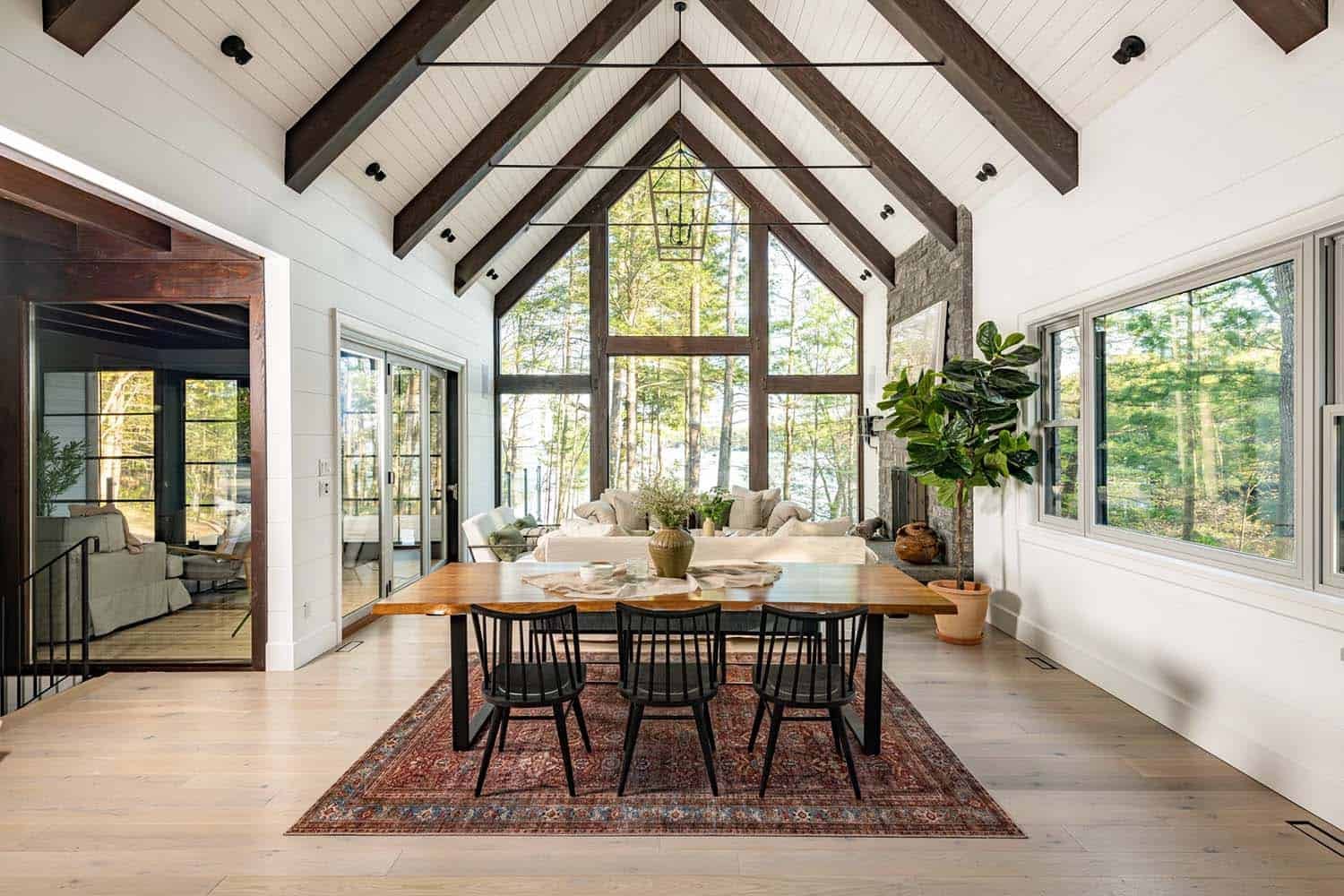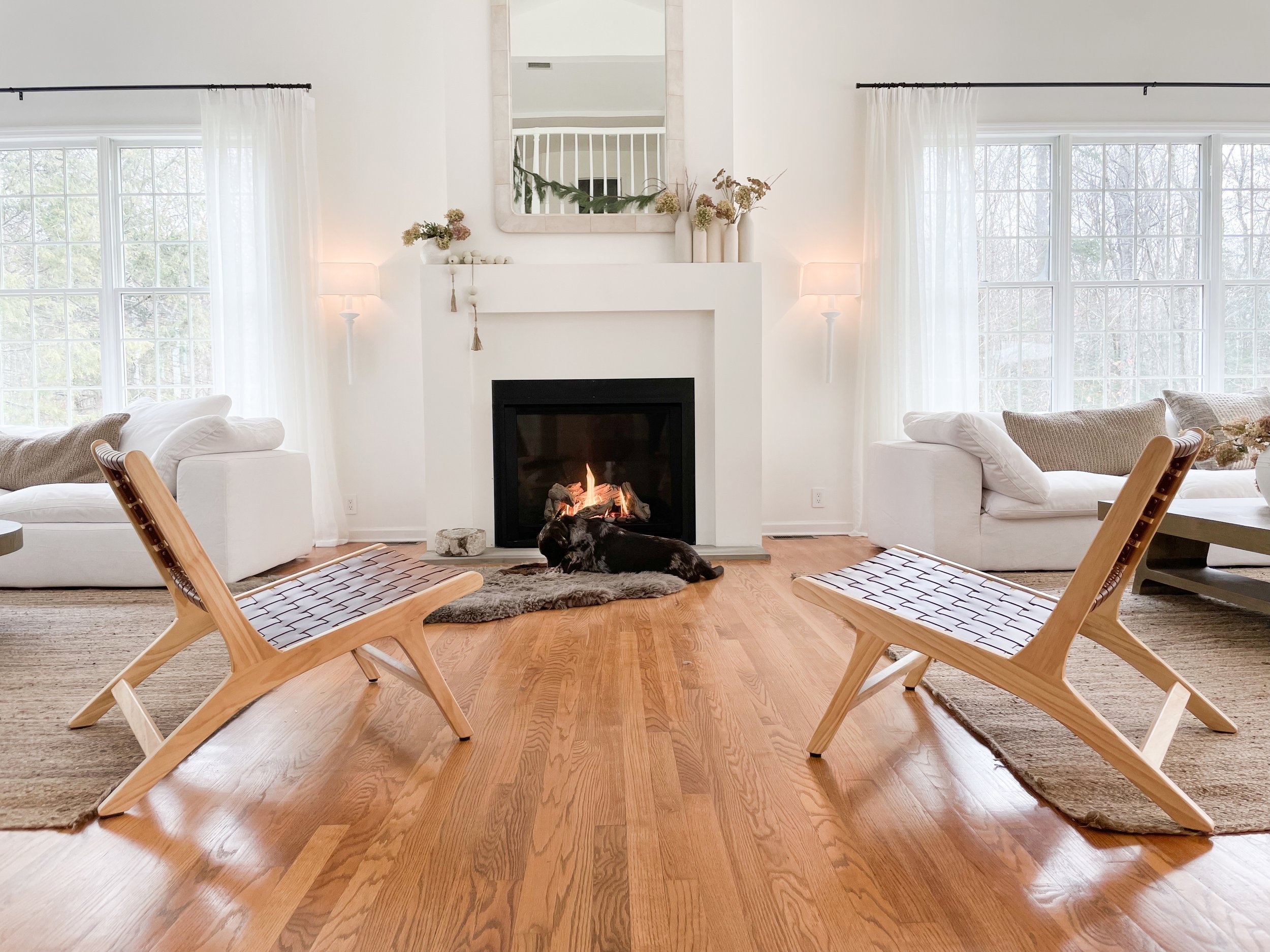Biophilic Design: What It Is and How to Incorporate It Into Your Home
While we’ve been spending much more time indoors and at home during the pandemic, many of us are looking for ways to bring the outdoors inside.
If this sounds like you and you’d like to create more elements of nature inside your home, then you’ll be interested in biophilic design, a trend that has been gaining popularity over the last few years. And one of Pinterest’s big trend predictions of 2022.
Keep reading to learn all about biophilic design and the different ways you can incorporate it into your home.
Dezeen
What Is Biophilic Architecture and Design?
Before we dive into design tips, you might be wondering what biophilic design is exactly.
Biophilia supports the idea that humans have an innate connection with nature, and have an evolutionary need to be close to the natural world.
Biophilic architecture and design strive to create spaces that reconnect people with nature, essentially as a reaction to our synthetic urban structures and environments. You can think of it as introducing more of the outdoors inside and more of the indoors outside. By doing so the goal is to improve both our mental and physical health.
The practice goes beyond green design, which aims to use eco-friendly materials, and focuses more on facilitating deeper human connections with the natural world.
Studies show that having regular access to nature has a positive effect on our mental health and wellbeing. Supporters of biophilic design say many of the benefits include increased productivity, less stress, better mood, and greater creativity (Terrapin Bright Green).
Hotel Can Bordoy
What Is Biophilic Interior Design?
With an understanding of what biophilic architecture and design aim to do, it would also be helpful to clarify what biophilic interior design is more specifically.
Essentially it is translating the goals of biophilic design to interiors. By creating spaces that are focused on wellness and creating more of a connection to nature through all the interior design elements.
This includes the building materials used inside, furniture layout, window placement, color schemes, and decor.
Biophilic architecture and interior design have largely been focused on commercial buildings, more recently it has become a home interior design trend.
SAI Architectural Design Office
How to Incorporate Biophilic Design in Your Home
No matter the type of home design project you’re taking on – a new build, a remodel, or redecorating project, there are plenty of ways you can include biophilic design in your home.
Whether you want to focus on biophilic office design, bedroom design, or your entire house – our full list of tips is outlined below.
One Kind Design
Let in Natural Light
There is a long list of all the benefits of natural light – it can help improve your mood and your sleep, to name a few (Health Line).
For new builds or remodels especially take advantage of natural light as much as you can. This means windows and skylights galore!
Think about window placement to take advantage of natural light at the time of day you most commonly use the rooms.
If you can’t add windows, using mirrors and incorporating furnishings with reflective surfaces can help disperse natural light throughout a room.
AHG Interiors - Wittenberg Haus
Optimize Views
Also when thinking about window placement, try to take maximize views as much as you can. Whether you have a garden, yard, or nature at your doorstep you’ll want to be able to look out at it as much as possible.
To make your home feel more open and airy think about creating sightlines throughout your home. This can give you access to outside views from different rooms in the house.
If you live in a city and don’t really have a view to look at, you can make one with beautiful artwork.
AHG Interiors - Astor
Create Natural Color Schemes
A great way to incorporate nature in your home design is to select a color scheme inspired by nature. This could be as simple as going with neutral earth tones and adding shades of green or blue.
Or you can think about your local (or favorite) ecosystem and pull inspiration from that – whether you love the ocean, desert, mountains, prairies, or forest.
To start getting ideas, check out Better Homes and Gardens for color palettes inspired by nature.
Incorporate Natural Forms
Another way to add biophilic design to your home is to incorporate shapes and forms inspired by the natural world.
Many of our home and manmade structures are geometric – with hard straight lines. Nature is full of asymmetry, imperfect forms, and curving shapes.
To counterbalance the hard lines of your home you can add architectural elements, like arches or nooks. Or you can focus on curved furnishings and decorative accents – which are very on-trend right now.
We love the curved Liam Sectional in a beautiful cream linen blend. It looks great on its own or as a pair.
Use Natural Materials
Incorporating a lot of natural materials in your home design can also make you feel more connected to nature.
You can use sustainable or reclaimed wood for your flooring or other design elements like beams or a wall feature. Also, think about incorporating natural stone and tile in flooring, counters, or your kitchen backsplash. Natural upholstery and fabrics to your living area and bedrooms add some softness.
Buy furnishings that are made from natural materials like a wood or stone table, and smooth leather, woven or upholstered chairs.
Another great thing about using natural materials in your home design is that you can have fun with different textural elements which add warmth and great visual interest to a space.
Monk-Ulnes Architects
Plants Plants Plants
Incorporating tons of lush greenery and plants is an easy way to make your interiors feel more like the outdoors.
From hanging plants to small or large potted plants – there are plenty of ways you can add more planets to your home.
Have fun and get creative. Whether you have a green thumb or are a plant novice, Forbes has a great list of the best indoor plants.
Bring In Elements From Outside (Literally!)
We’ve already covered using natural materials in your furnishings and decor, but you can go a step further and incorporate objects and elements from nature right in your home.
Think about adding some fire, like a cozy fireplace inside or a fire pit outside. If you don’t have the room, something as simple as candles are a great way to make a space feel warmer and inviting.
Adding a water feature may be something to consider. As studies have shown that access to water has a positive impact on our well-being.
Think about other objects you’d like to bring in to add some more rustic elements to your home – like branches, stones, boulders, or seasonal floral arrangements.
AHG Interiors - Astor








